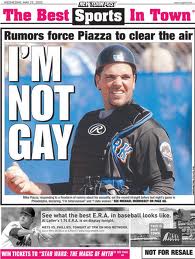-- by Josh Suchon
Note
to readers: The feedback on the “You Were Lucky, Hershiser” story was so
positive, and triggered so many memories from a childhood where my playground
was the Oakland Coliseum, I’ve decided to share more of these stories. I’m
blatantly stealing this idea from “Cardboard Gods” author Josh Wilker, who used his
baseball card collection to tell the story of his childhood in the 1970s.
Wilker gave me his blessing, so I’m going to use my autograph collection to
tell the story of my childhood in the 1980s.
This
chapter doesn’t fit the usual formula of baseball players who I bugged for
Sharpie Scribbles as a kid, then bugged for interviews as an adult journalist.
These are just two more good stories from my summer internship with the
Watertown Indians minor league baseball that I wanted to share.
As
mentioned in the previous chapter of this series, we had three memorable
promotions during that summer. Sparky Lyle Day went fine overall, but I
constantly felt like an idiot because it was so disorganized.
This
post is about the other two big events: when legendary fast-pitch softball star
Eddie Feigner's barnstorming team came to town, and when unknown pro wrestling
wanne-be imposters came to town.
Let's
start with The King.
The
first time I saw Eddie Feigner was an episode of ABC’s Wide World of Sports. He
was incredible. The Washington Post once described him as “the
greatest softball pitcher who ever lived.” Feigner was the pitcher on a
four-player softball team, dubbed “The King and his Court,” that took on all
comers around the world. They didn’t have outfielders. They didn’t need
outfielders he was so dominant.
The
King could pitch behind his back, through his legs, from second base,
blind-folded, and you still couldn't hit him.
By
1996, Feigner was 71 years old and still unhittable, but a younger guy
did most of the pitching to save his arm. The King pitched an inning or two
against the best team of ringers we could assemble from the area. The game
wasn't close. Nobody could touch the King. Everybody on "The Court"
mashed at the plate.
The
King and his Court were a relic from an era long before I was born, the
ultimate barnstormers. Combine that with a ballpark that was located at the
Alex T. Duffy Fairgrounds, it felt like we were in the 1950s.
I was
on the on-field PA announcer. I introduced the players and described the
action. Most importantly, I handed the wireless microphone to “The King” and
let him entertain the crowd by giving the history of himself, the team, and
tell stories.









